For a better future, study the past.
Menu
For a better future, study the past.
The fall of Bataan and Corregidor in the Philippine islands to Japanese forces were arguably the
worst defeats of United States forces during World War II.
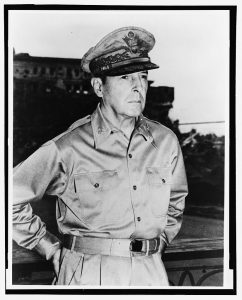
In VERY simplified form, General Douglas MacArthur and his troops in the Philippines were tasked with holding back the advancing Japanese Imperial Army. Their objective was to keep Japan out of the American territory of the Philippine Islands.
General MacArthur consolidated his troops on the Bataan Peninsula where a combined force of American and Filipino troops were able to hold back the onslaught of Japanese troops for three months, a crucial delay to the plans of Japanese leadership.
After escaping Corregidor during the night of March 12, 1942, General MacArthur later uttered his famous “I Shall Return” speech, a promise he made good on in 1944.
On April 9, 1942, Bataan fell. Major General Edward P. King surrendered the allied troops to Major General Kameichiro Nagano, beginning what would become a further nightmare for the already hungry and weary troops. The surrender of Bataan would lead to the surrender of Corregidor less than a month later.
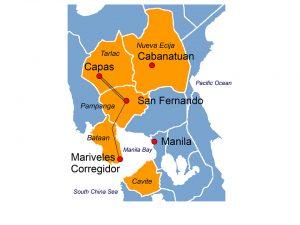
It was at this point, where Japanese soldiers ordered their prisoners into a series of marches that collectively are known as the Bataan Death March. This march was approximately 65 miles with little to no food and water.
Online sources vary as to the number of prisoners and to the number who perished. A good estimate as to the number of prisoners forced into the march is 75-80,000 combined U.S. and Philippine troops. Death estimates from the forced march and conditions at Camp O’Donnell range to as high as 20,000 soldiers.
Fast forward to the 1990s in the city of Kissimmee, FL. In 1991, the city approved the project and dedicated a quarter acre plot at Monument Avenue and Lakeshore Boulevard for the erection of a memorial honoring those who served in the Philippines during World War II. The men who spearheaded the project were former Kissimmee City Commissioner Richard Herring and resident Menandro de Mesa who founded the Bataan-Corregidor Memorial Foundation. The Foundation set a goal of raising the roughly $125,000 needed for the creation and installation of the monument. The Osceola County Tourist Development Council contributed $10,000 toward the goal.
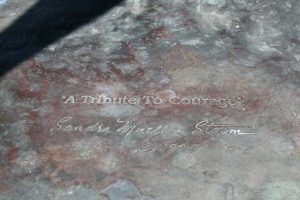
Sculptor Sandra Mueller Storm received the commission to create the haunting memorial. Storm is a renowned artist with multiple large commissions to her credit including “The Courage to Challenge” in Vierra, FL, “Called to Serve” in Hillsboro, KS, and “Melody of Arts” in Panama City, FL. Her work is featured in major collections throughout the country. In discussing her work she stated, “I think my major strength as a sculptor is the intensity of my involvement in what I create in bronze and the emotional impact my sculptures have on those who view them. Teaching sculpture for many years has also showed me how art can change lives, especially of children and the elderly.”
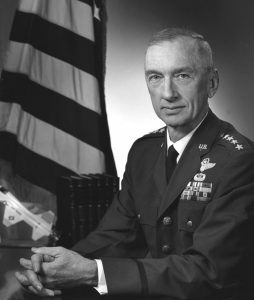
On Saturday, May 20, 1995, a day in which Florida spring rains would not hold off, the city unveiled the life sized bronze statue to a crowd of several hundred. The program included a wreath laying, and keynote speeches from Philippine Brigadier General Tagumpay Nanadiego and retired United States General Bruce Holloway.
The statue features three figures huddled together showing the pain and desperation of the march. The scene depicts a Filipina woman offering care and water to two soldiers, one Filipino and the other American.
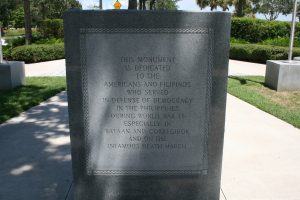
The text of the dedication plaque reads:
This monument is dedicated to the Americans and Filipinos who served in defense of democracy in the Philippines during World War II, especially in Bataan and Corregidor and on the infamous death march.
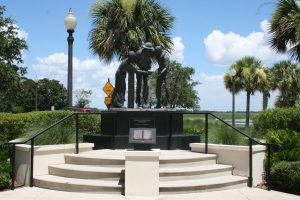
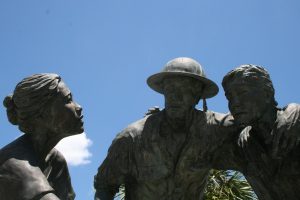
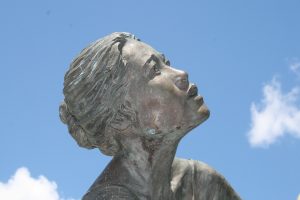
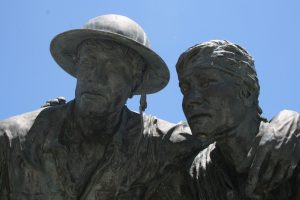

Every student of World War II should subscribe to World War II History. Written by experts and beautifully illustrated you will save each issue. Click the photo or the link to receive exclusive savings offers on this title and hundreds more. Your first issue will be in your mailbox before you know it.